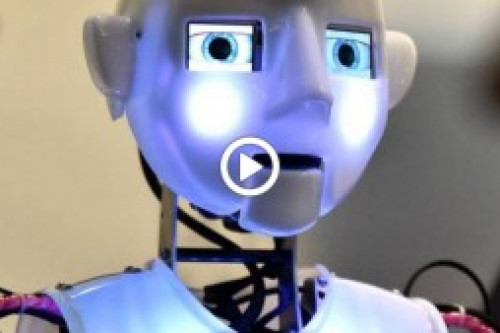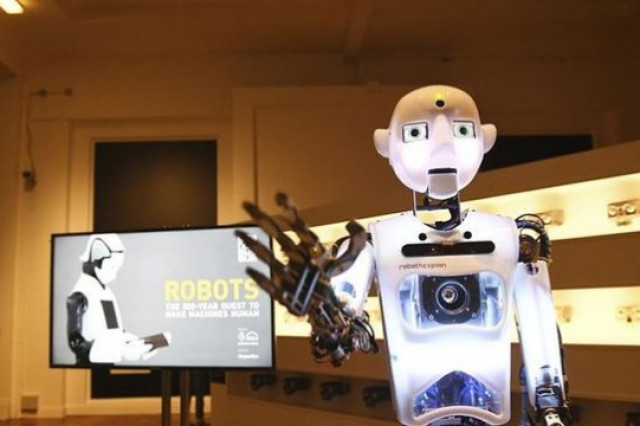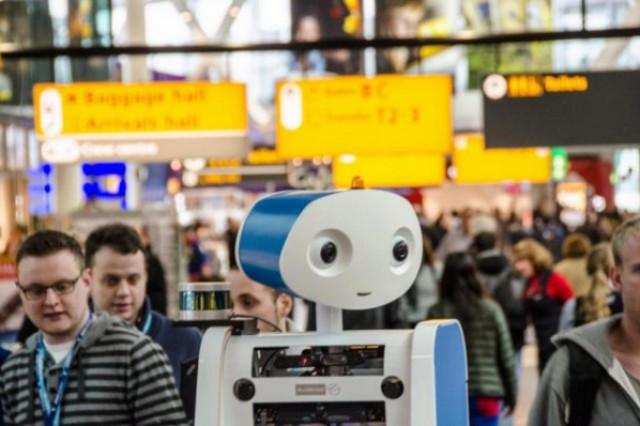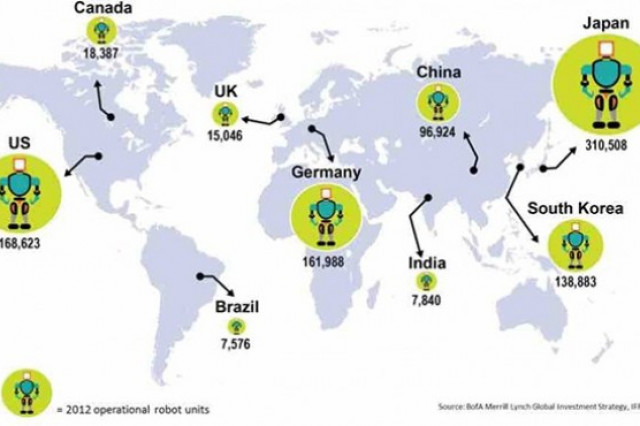Robots are increasingly popular, the term robot appears every time in more places and applications, and is also used to refer to increasingly diverse devices and concepts, and society has different reactions to it. This has led to a long-standing debate on the influence of robots on society, such as, among other discussions, leaving a good portion of the working class out of work. Even now, there are those who propose "to charge a tax on robots" or that "robots pay a quota to the social security". In this context, the usefulness and social relevance of robots are discussed, sometimes generating a certain rejection of their introduction in certain aspects of daily life, but on the other hand, new types of robots provoke the admiration of society, and that they are very welcome without any discussion. Thus, although its progress seems unstoppable, and in general welcome, society as a whole sometimes has mixed feelings about whether to accept robots.

To be able to speak accurately on this subject, we should first clarify that we are speaking in precise terms when we refer to "robots", since the use of this term has evolved in such a way that today refers not only to the most disparate mechanical devices we could imagine, but also, for example, to computer software. Therefore the significant expansion of robots has two causes, on one hand, a real expansion that implies a sustained growth in the number of "classic" robots on the market, and, on the other, an extension of the robot concept that extends as such to new devices, which in turn also exhibit growth, not simply sustained but spectacularly increasing. Without pretending to make a detailed taxonomy of the different types of robots in existence, we will give some illustrative examples of the scope of the term robot, which we must not forget, is of Czech origin and made its appearance in a play written by Karel Čapek in 1920 to refer to mechanical devices, human-like, without feelings, but with a huge capacity for work.
Industrial robot began in the 60s decade
Beginning with "computer robots", the term was used to refer to programmes that automatically scan the network to find certain information, and there is nothing in these robots that involves movement of a mechanical system. It is perhaps the least fortunate version of the term robot, but in any case does not generate alarm as far as job losses are concerned, but rather a certain concern that its association with malicious software could affect the security of some computer systems. Another unfortunate variant of the term robot is the "kitchen robots", so called containers capable of controlling the temperature and cooking conditions and, in some cases, internally stir the food in a programmed way. Leading chefs do not feel threatened by these devices and the daily and familiar use of them is welcome because it saves time and facilitates the preparation of food.
Although its progress seems unstoppable, and in general welcome, society as a whole sometimes has mixed feelings about whether to accept robots
Let us now consider that robots that have a mechanical structure and their use or application implies movement of the same. If we look at the RAE (royal Spanish Language Academy) definition: "Robot: programmable electronic machine, capable of manipulating objects and performing operations previously reserved only for people." We see that this imposes restrictions (such as the ability to manipulate objects or perform tasks initially reserved for people), which leaves out some types of robot, suffice to mention as an example that there are robots that emulate fish or insects and their respective behaviours. The definition is orientated to the so-called "industrial robot", which is also more technically defined as (ISO 8373): "Robot industrial manipulator: automatic, reprogrammable, multipurpose device with three or more axes that can be at a fixed site or mobile, intended for industrial automation applications".
The industrial robot began its journey in the 1960s, coinciding with a strong expansion of the automotive industry (to which it also contributed), rapidly assumed a significant presence, and since then, this industry sector has been its main field of application, however little by little it has been gaining ground in other sectors. To give a more precise idea, the information gathered by the Spanish Association of Robotics and Automation of Production Technologies (AER-ATP) on the installation of industrial robots by sectors in 2015, indicates that 48.5% is in the car industry sector, 16.3% in the food and beverage sector, 13.6% in metal, 7.7% in rubber and plastics, and the other sectors in the list with very minor percentages. If we look at the data on the distribution of robots by applications, welding has 40.3% and handling and loading/unloading machines 38.7%, while the other specific applications are in percentages less than 3%. This type of robot is the one that generates a certain social anxiety, in view of the fact that its growth implies the suppression of jobs.
Robots will replace human labour
It is true that robots replace human labour, especially those related to repetitive tasks or low qualifications, and this fact leaves old workers with weak possibilities for the future, with little chance of them improving their expertise and updating their knowledge. However, if analyzed in a global context, we see that the regions with higher rates of company robotization are also those that have greater economic strength and lower unemployment rates, so we can say that jobs have not been destroyed, rather that they have changed their requirements. They are jobs that are normally require more qualifications, or are associated with the necessary activities as a complement to the production (e.g. distribution, sales and services linked to production, or activities derived from the use of the products themselves). It is a complex issue, but we could say that the robotization of production entails a change in the type of labour required throughout the entire production and distribution chain.
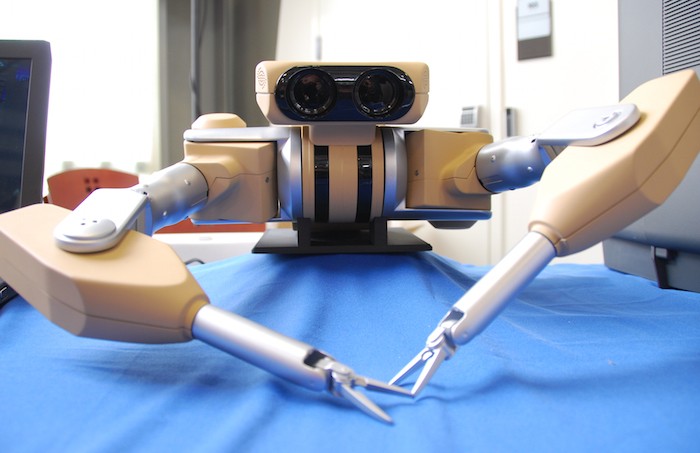
Robots have been incorporated into new areas, contributing to the automation of more tasks and the development of new techniques and processes, and one of the causes is the increase of their mobility, which has given rise to mobile robots: terrestrial, aerial and submarine. Also here, the term robot has been gaining ground, and what used to be simply a car is now transformed into a robot when it can operate independently, although there are no changes in the mechanical performance of the device. The same happens with airplanes, helicopters and submarines: it is the ability to function autonomously that has put them under the umbrella of robotics. Its use has opened up new markets and even improved and expanded some services. Mobile Autonomous Guided Vehicles (AGV) now have their maximum expression in driverless cars, which could lead to a radical change in car use, clearly threatening the existence of the "driver" and generating the need to adjust the associated legal framework (for example: liabilities in case of accidents for insurance coverage), but outside the groups directly affected society, we do not seem to be worried and we accept the changes.
With respect to the flying robots (drones or "Unmanned Aerial Vehicles", UAV), there has been a significant recent expansion which also requires the development of legislation that regulates their use. Their field of application is mainly related to inspection (use of cameras for aerial observation), but also in applications such as selective fumigation in agriculture, or the transfer of small parts over relatively short distances. In this case, the greatest social fear is mainly related to safety, and to a lesser extent privacy, since these devices can easily avoid traditional barriers intended to limit access by people, for example, can easily access a high window. Finally, with regard to underwater robots, given their lesser influence on people's daily lives, the most widespread applications are related to exploration, rescue or scientific activities, and do not alter or threaten regular jobs. Because of this, they do not suffer particular social rejection, nor provoke a special attraction.
For a long time they were nothing but fantasy beings
Other types of robots are those that imitate animals, and can have diverse functions. We find robots that emulate insects, reptiles, birds, fish, and, of course, humans. The applications are very disparate, ranging from purely of scientific interest in better understanding nature, as an example. These robots are camouflaged between real animals to capture information of interest in a natural environment, or mimicking nature to solve practical problems: a robot that emulates a snake could more easily access certain sites than robots with other structures. Also, imitation animals have applications in the entertainment industry. These robots are generally well-received from the social point of view, they attract attention, are especially attractive and are not regarded with fear, since they apparently do not seem to threaten conventional jobs and do not seem dangerous (although this does not mean that they cannot be so).
Robots are just tools whose proper use can greatly help the human being, but that, as with other devices, its malicious use can also cause a lot of damage
Humanoid robots are the special case of imitation of living beings, which in fact were those that gave rise to the term robot. For a long time they were no more than fantastic fictional things, but there are several real humanoid robots, not only in a state of experimental development but also commercially available, although depending on their complexity and capabilities prices can be high. Versions have also been popularized with some simplifications that make them a little more practical, such as having wheels instead of legs to gain stability and decrease complexity at the cost of reducing versatility in movement, or having arms and hands with much less mobility that a human to gain in simplicity and basic operability at the cost of losing dexterity and manipulation capacity.
Humanoid robots generally have a good social reception, although the vision that they will surpass the human in intelligence and capacity (very much promoted in the cinema and literature) always generates a certain fear. However, society sees it as a possible future problem, not as an immediate one. In any case, the influence on people of the physical appearance of humanoid robots, whose appearance can generate confidence or rejection, is still being studied. However, the most sought after aim is always that they are as similar as possible to human beings.
Robots are nothing more than tools
So far we have talked about different types of robots, mentioning some very specific categories. There are also other approaches that classify them by applications, for example, those used as companionship for older people or children with communication problems (robots not necessarily with human or animal appearances), those used as assistants in surgery and rehabilitation, or variants of the latter to expand the physical capacity of a human. These applications always have a good social reception.
Changing from scale, there is also micro- and nano-robotics (thousandths and millionths of a millimetre), whose potential applications, although they generate some mistrust in general in society, are still somewhat unknown.
We must inevitably mention also military applications of robots, which can be presented as a solution for avoiding human casualties, and also as very efficient tools to increase them.
We could say that the robotization of production entails a change in the type of labour required throughout the entire production and distribution chain
As already mentioned, the expansion of robotics, due to new types of robots as well as to their application in new fields, makes an exhaustive and detailed account impossible in a text as summarised as this one, which limits itself to presenting some paradigmatic examples. Robots are just tools whose proper use can greatly help the human being in many different aspects, but that, as with other devices, its malicious use can also cause a lot of damage.
As with other developments and inventions throughout the history of mankind, the benefit and usefulness that makes the momentum of robotics so significant, can also leave behind negative consequences. Although some directly-affected groups or sectors try to curb their expansion in different ways, society as a whole accepts robots, even knowing that little by little they can change the norms established and our social behaviour, always with the objective of improving the conditions and quality of human life. At the moment, it is advancing in this direction, and it is up to humans to continue in the future.



